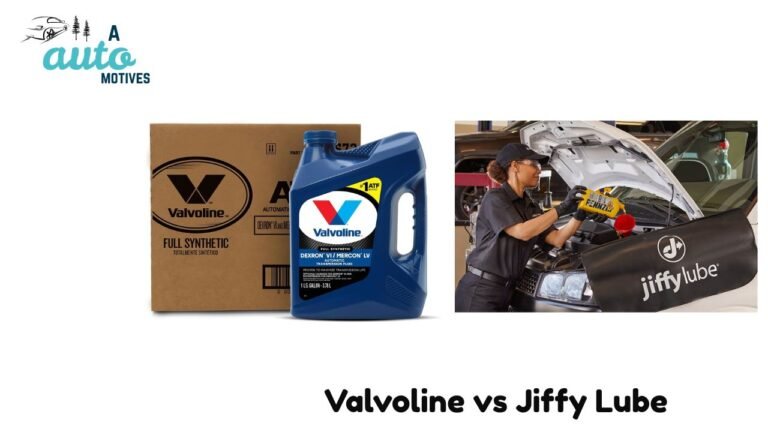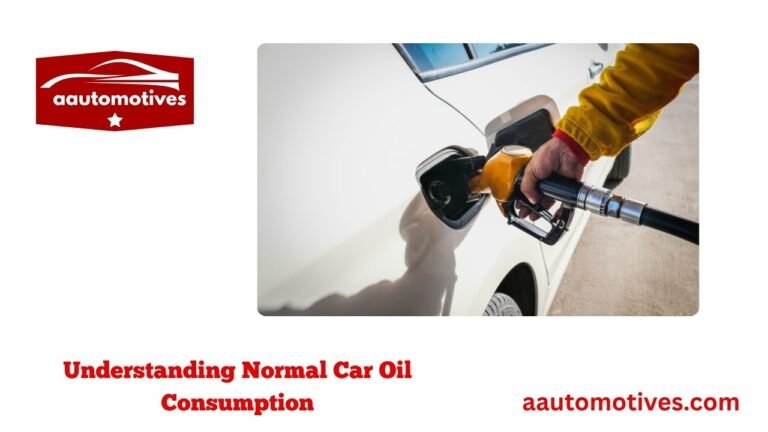What Causes a Car to Use Oil?

Ever had that moment when you check your oil dipstick and wonder, “Where did all my oil go?” It’s like your car has become a secret oil addict. You don’t see leaks. There are no scary smoke clouds behind you. But somehow, the engine oil keeps vanishing.
This problem is more common than you think. Even well-maintained cars can burn or consume oil over time. Whether you’re a daily commuter, a weekend adventurer, or just someone who drives to the corner store, understanding what causes a car to use oil can help you protect your engine and your wallet.
In This Article
- 1 Why Your Car Uses Oil: It’s Not Always What You Think
- 2 1. Worn Piston Rings: Oil’s Secret Gateway
- 3 2. Valve Seal Leakage: The Silent Oil Burner
- 4 3. Bad PCV Valve: A Small Part, Big Trouble
- 5 4. Turbochargers and Oil Consumption: The Hidden Risk
- 6 5. Wrong Oil Type: Slippery Mistakes Happen
- 7 6. Hot Engines Burn Oil Faster
- 8 Real Talk: What I Noticed in My Own Car
- 9 How to Reduce Oil Consumption in Your Car
- 10 When Oil Use Is Normal vs. A Problem
- 11 Emotional Insight: It’s Not Just About Mechanics
- 12 When to See a Mechanic
- 13 FAQs: Common Questions About Car Oil Use
- 13.1 Q1: Can a car use oil without leaking?
- 13.2 Q2: Is it normal for high-mileage engines to use oil?
- 13.3 Q3: Can synthetic oil cause oil consumption?
- 13.4 Q4: What color is the smoke when oil is burning?
- 13.5 Q5: How often should I check my oil level?
- 13.6 Q6: Will an oil additive help stop oil burning?
- 13.7 Q7: Can driving style affect oil usage?
- 13.8 Q8: Does fuel quality have anything to do with it?
- 14 Real Life: Bangladesh Road Stories
- 15 Final Thoughts: Respect Your Engine, Save Your Wallet
Why Your Car Uses Oil: It’s Not Always What You Think

Now here’s where things get interesting: a car using oil doesn’t always mean there’s an obvious oil leak. Sometimes, your engine simply burns it. And this can happen due to wear, age, or poor engine design.
Common Causes of Oil Consumption
| Cause | Description | Severity |
|---|---|---|
| Worn piston rings | Let oil slip into the combustion chamber | High |
| Valve seal failure | Causes oil to burn slowly during engine operation | Moderate |
| PCV system malfunction | Leads to oil being sucked into intake manifold | Moderate |
| Turbocharger issues | In turbo engines, oil can leak into the intake | High |
| Using wrong oil grade | Thinner oil may pass through tiny engine gaps | Low |
| High engine temperature | Burns oil faster if engine runs hotter than normal | Medium |
| Aggressive driving habits | Revving or towing stresses engine and uses more oil | Variable |
| Old or high-mileage engine | Normal wear and tear leads to slow oil usage | Low–High |
1. Worn Piston Rings: Oil’s Secret Gateway
Let’s kick things off with one of the biggest culprits. Worn piston rings are like broken doors in your engine. These rings are meant to seal the space between the piston and the cylinder wall. When they’re in top shape, they keep combustion gases in and oil out.
But over time—especially in high-mileage engines—these rings wear out. This wear creates tiny gaps, letting oil sneak into the combustion chamber, where it’s burned along with the fuel.
You’ll rarely see a puddle on the ground. But you might notice blue smoke from the exhaust or a dip in power. In some cases, your check engine light might show up, adding more confusion.
Think of it like a worn zipper on a jacket. It doesn’t close properly, and cold air gets in—except in this case, the “cold air” is oil entering the combustion chamber.
2. Valve Seal Leakage: The Silent Oil Burner
Valve seals play a big role in managing oil flow inside the engine head. Their job is to keep oil from dripping into the combustion chamber when your engine valves open and close.
When these seals wear out, oil slowly seeps down through the valve guides and burns with the fuel mixture. It’s a slow, sneaky process—kind of like water dripping from a leaky faucet. You may not see any signs until your oil levels start to drop unexpectedly.
This often happens in older vehicles, especially those that idle for long periods or go through lots of stop-and-go traffic. Cold starts can also worsen the issue since oil is thicker and more likely to sneak past worn seals.
3. Bad PCV Valve: A Small Part, Big Trouble
The PCV (Positive Crankcase Ventilation) system is one of those small engine parts that often gets overlooked. But it plays a crucial role in preventing pressure build-up inside your engine.
When this valve gets clogged or stuck open, it allows engine oil vapor to be sucked into the intake manifold. And just like that, you’re burning oil without knowing it.
The PCV valve is cheap to replace, and it’s a common fix when someone complains about unexplained oil loss. I had a friend with a Honda Civic that kept losing oil, and after several oil changes and mechanic visits, it turned out to be a 300-taka PCV valve. Simple fix—big relief!
4. Turbochargers and Oil Consumption: The Hidden Risk
If your car is turbocharged, listen up. A turbocharger runs on very high speeds and temperatures, and it relies on a steady oil supply for lubrication.
When seals in the turbo start to fail, oil can leak directly into the intake or exhaust side. This not only causes oil loss but also can lead to smoky exhaust and even engine damage over time.
I’ve seen performance enthusiasts modify their turbo setups and then struggle with uncontrolled oil use. Turbo engines need extra care. If you’re noticing white or blue smoke after a hard drive, your turbo might be sipping on your oil like a milkshake.
5. Wrong Oil Type: Slippery Mistakes Happen
Using the wrong oil grade is like wearing shoes that don’t fit. Sure, you can walk—but not comfortably or safely.
Engine oils come in different viscosities (like 5W-30, 10W-40). If you use oil that’s too thin for your engine (especially in older engines), it can slip past seals and burn quicker.
Some newer cars are designed for thin synthetic oils, which can reduce fuel consumption. But if you’re using such oil in an older engine that was designed for thicker stuff, you might be inviting oil loss.
Always check your owner’s manual or consult a mechanic. Don’t assume all oils are the same—even if they’re shiny and expensive.
6. Hot Engines Burn Oil Faster
Heat is one of the major reasons oil gets consumed faster. Engines that run hotter than normal—either due to cooling system problems, heavy towing, or constant high-speed driving—will burn more oil.
Why? Because oil thins out when hot, and thinner oil can sneak past worn seals and rings more easily. It’s like cooking with butter—leave it on high heat too long, and it sizzles away.
Drivers in hot climates or those who sit in long traffic jams daily might see oil loss without any mechanical failure. Keeping your cooling system healthy—radiator, thermostat, fans—can help reduce unnecessary oil usage.
Real Talk: What I Noticed in My Own Car
Let me share a personal story. A couple of years ago, I had a used Mazda with over 150,000 km on the clock. Everything seemed fine—until I noticed the oil level dipping faster between changes.
No leaks. No smoke. I was confused.
Turned out, the valve seals were worn, and oil was burning silently. It took a mechanic friend to spot it. He ran a compression test and then a leak-down test—classic diagnostic tools—and we caught it.
Lesson? Regular checks and listening to your engine (and mechanic) can save a lot of stress. Trust your instincts when something feels off.
How to Reduce Oil Consumption in Your Car
Now that we’ve unpacked what causes a car to use oil, let’s talk about how to slow it down. Because here’s the deal—even if your engine naturally burns a bit of oil, that doesn’t mean you have to live with constantly refilling it like topping up tea at a family gathering.
These tips aren’t magic—but they’re practical and often work wonders:
1. Use the Right Oil Grade
Check your car’s manual. Use the recommended viscosity grade. Older cars might benefit from a slightly thicker oil, especially if they’ve got some wear and tear.
Example: A 10-year-old car might do better with 10W-40 instead of 5W-30 in hotter weather.
2. Change Oil on Time
Old oil breaks down and burns more easily. Stick to your oil change intervals, and always use quality oil and filters.
3. Inspect the PCV System
This is a small, cheap part that’s often the root cause of mysterious oil loss. Replace the PCV valve every 30,000–50,000 km just to be safe.
4. Drive Smoothly
Avoid revving the engine hard when it’s cold. Give your engine time to warm up. Gentle driving helps preserve seals and rings longer.
5. Routine Engine Checks
Have a mechanic check for compression issues, valve leaks, and signs of turbo wear. Catching small problems early can save you money.
When Oil Use Is Normal vs. A Problem
Some oil usage is completely normal—especially in older engines. But how do you know when it’s too much?
Let’s break it down:
| Engine Type | Acceptable Oil Usage |
|---|---|
| New Engines | 0–0.2 liters per 1,000 km |
| Older Engines | Up to 0.5 liters per 1,000 km |
| Turbocharged Engines | Up to 1 liter per 1,000 km |
| Performance Engines | Slightly higher may be normal |
If you’re adding a liter of oil every 300–500 km? That’s a red flag. You should definitely get it checked out.
Emotional Insight: It’s Not Just About Mechanics
Let’s take a step back and acknowledge the frustration. You’re doing your best—changing oil, driving responsibly—but your car still drinks oil like chai on a winter morning.
It’s emotionally draining, especially if you’re tight on budget or dependent on your car for work or family.
I remember my cousin in Mymensingh, a schoolteacher, who had a beat-up Corolla that kept needing oil. Every time he thought of replacing it, something more important came up—his daughter’s education, his mother’s medicine.
We often forget: a car isn’t just metal and bolts. It’s part of our daily rhythm, and when it’s not reliable, it feels like life is a little off-balance. So yes, oil loss is technical—but the stress is deeply human.
When to See a Mechanic
If any of these apply, go see a trusted mechanic:
-
You’re adding oil more than once between changes
-
You smell burning oil while driving
-
The check engine light or low oil pressure warning appears
-
You notice blue smoke during acceleration
-
There’s a visible oil trail or puddle
Sometimes, a small valve seal job or PCV replacement can stop oil usage early. But delaying can turn it into a costly engine rebuild.
FAQs: Common Questions About Car Oil Use
Q1: Can a car use oil without leaking?
Yes, definitely. Oil can be burned inside the engine due to worn piston rings, valve seals, or a bad PCV valve. You might never see a drop on the ground.
Q2: Is it normal for high-mileage engines to use oil?
Yes. Engines with over 150,000 km often consume more oil because of wear on internal components. A little usage is okay, but excessive burning needs attention.
Q3: Can synthetic oil cause oil consumption?
Sometimes. Synthetic oil flows better and may slip past older seals or worn parts more easily. In some older engines, switching to a thicker synthetic or semi-synthetic helps.
Q4: What color is the smoke when oil is burning?
Burning oil usually produces blue or bluish-grey smoke, especially when accelerating or starting a cold engine.
Q5: How often should I check my oil level?
Once every two weeks is a good habit, especially if you suspect oil loss. Always check when the engine is cool and on level ground.
Q6: Will an oil additive help stop oil burning?
Additives can temporarily improve seal performance in older engines, but they’re not a fix. Use only if recommended by a professional.
Q7: Can driving style affect oil usage?
Yes. Hard acceleration, towing heavy loads, and constant high RPMs can lead to faster oil consumption—even in newer cars.
Q8: Does fuel quality have anything to do with it?
Indirectly. Poor fuel can cause incomplete combustion, which may increase carbon build-up, stressing engine components that affect oil control.
Real Life: Bangladesh Road Stories
Driving in cities like Dhaka or Chittagong is tough on engines. Stop-and-go traffic, high humidity, and rough roads mean your engine works harder. Many drivers here don’t realize that short trips—like dropping kids at school or going to the bazar—don’t let the engine reach optimal temperature.
This leads to condensation, incomplete combustion, and eventually faster oil degradation. One of my neighbors in Uttara used to change oil only once a year, thinking he didn’t drive much. But because his trips were so short, his oil was turning acidic and burning off!
Final Thoughts: Respect Your Engine, Save Your Wallet
By now, you understand that figuring out what causes a car to use oil isn’t just about knowing parts and engines—it’s about listening. To your car, your mechanic, and your gut.
Here’s a quick recap to remember:
-
Piston rings, valve seals, and PCV valves are top suspects
-
Turbo engines need more care and monitoring
-
Check your oil regularly, especially on older vehicles
-
Use the correct oil grade and change it on schedule
-
Don’t panic if there’s minor oil usage—it’s normal in many cars
But if your car suddenly starts drinking oil like it’s Ramadan Iftar, it’s time to take action.
Cars may not talk, but they always give signs. Listen closely, act early, and your engine will thank you with many more kilometers of loyal service.






